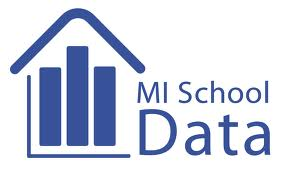Comprehensive Needs Assessment
2015-2016
Summary
Community Demographics: Belding Area Schools is located in Ionia County. The school system is one of the largest employers in the area. Belding staff, students, parents, and community members completed a $38 million dollar bond project during the 2014-2015 school year, which included adaptations, as well as new, school facilities, athletic facilities, busses, and a 1:1 technology initiative.
The population in 2013 for Belding was 5,571 residents. 90% of population are the whites, 5% are Hispanics, and the remaining 5% various ethnicities.
The Median resident age is 37.3, which is below the State of Michigan’s median resident age of 39.6 years old.
The estimated median household income in 2013 was $36,405 which has increased since 2000 at $32,878. However, this is well below the State average of $48,273 per household. The per capita income level in 2013 was $17,397.
The estimated median house or condo value in Belding in 2013 was $79,363 down from 2000 which was $84,300. Belding’s median house or condo value is also well below the State average of $117,500.
Belding has a decreasing enrollment trend. Approximate enrollment for 2015-2016 is 1865. There is 1 Superintendent/Director of Instruction, 4 building principals, 3 assistant principals, school social workers/counselors, S/L therapists, certified and highly qualified teachers and paraprofessionals, and other support staff including central office, maintenance, food service, and transportation. 2012-2013 was the first year of sub-contracting of custodial staff.
Belding has about 60% or more of its students receiving free or reduced meals. The ethnic make-up of the student body includes mostly Caucasians, with major sub-groups of Migrants and Hispanics.
Belding is the fiscal agent for the four county Migrant and English Learner Consortium (Ionia, Montcalm, Clinton, and Gratiot counties). There was a significant loss of students for the 2012-2013 school year due to the poor crop season, which influenced Belding’s per pupil funding significantly (a loss of about 50 students).
Student Demographic Data: Belding has an early elementary school with grades PK-2, a grades 3-5 elementary school, a grades 6-8 middle school, and a 9-12 grade high school. Our district demographics include a fall count of 1883.66%
students. Our free and reduced rate for the 2015-2016 February count is 60.55%. As of the fall count, there are 52% males and 48% female students, 11% of the students have an identified disability, 3% are migrant, while 6% of the student body are English Learners. The district has 86% Caucasian students and 10% with the Hispanic ethnicity.
Staff Demographic Data: The district has approximately 200 staff members of which include 42 teachers with a Bachelor’s degree, while 68 have a Master’s degree and 5 have an Education Specialist degree. The staff are primarily Caucasian and speak English as their primary language.
Staff Perceptions: Overall the staff feels that there are very strong and cohesive working relationships that ultimately benefit our students both in and out of the classroom. They would like to have more time set aside for collaboration, planning, and peer modeling accomplished through observing each other teach. There is also a movement toward ensuring that there is more consistency with discipline at both the classroom and building levels.
Parental Perceptions: Parents feel that their children are safe and well cared for while they are at school. In general, they would like to see stronger attendance at school events that are designed for families, a desire that is shared by the district educators as well. Parents also feel that although they are very well informed about school and extracurricular events, they wish to have more information that directly concerns school, academic,and curricular programming.
Student Perceptions: Students feel like school is a safe environment and that our teaching staff is dedicated to helping them succeed as students and as people. Students would like to see more relevance for the content they are learning.
District Systems Review: The surveys determined that Belding Area Schools needs to continue to improve the professional learning culture district-wide. The district is also going to focus on continuing to refine the strong curricular work that began four years ago in moving towards a consistent and aligned curriculum at all grade levels. There is also a need to establish and ensure support for our professional learning systems.
School Systems Reviews: Staff determined a consistent need across the district which is the ability to find and schedule time for collaboration both within departments or grade levels, as well as vertically across buildings. The constant need for relevant professional development is also something that will continue to be a priority.
Student Achievement: Staff determined the following as needs after reviewing both State and Local data.
1. There is a need for a consistent way to collect local science and social studies data for progress
monitoring in all buildings. (Process)
2. There is a need to review and revise local assessments to include more rigor and assessment questions
that align to the way they are asked on State assessments. (Training and
Process)
3. Data Dialogue Early Release Days need to have a protocol used by all staff when reviewing formative and
summative assessment data. (Process)
4. There is a need for vertical alignment of core content strategies across all buildings. (Process)
5. There is a need to close achievement gaps in the following three subgroups: (Strategies)
a. Students with Disabilities
b. Economically Disadvantaged Students
c. Hispanic Students
6. There is a need for a consistent vertical alignment of content area vocabulary strategies in all buildings.
(Strategy)
7. There is a need for consistent comprehension strategies in all ELA/Reading classes. (Close Reading Strategy was selected.)
8. There is a need for consistent basic math skill strategies in all math classes. (Claim three was chosen by staff as the focus for next year.)
9. There is a need for the science teachers across the district to begin to study the Next Generation Science Standards and incorporate them into the curriculum document.
For technical questions and comments regarding this website, including accessibility concerns, please contact the Webmaster. Back to Top



